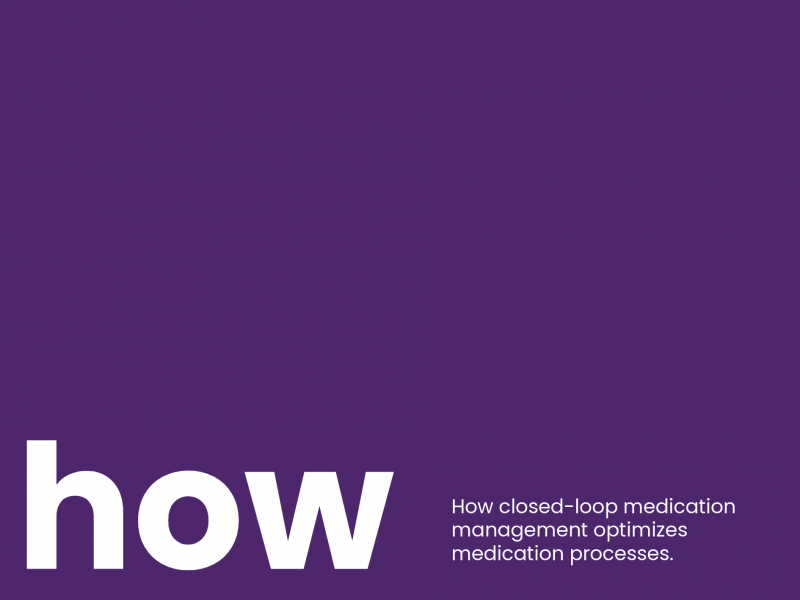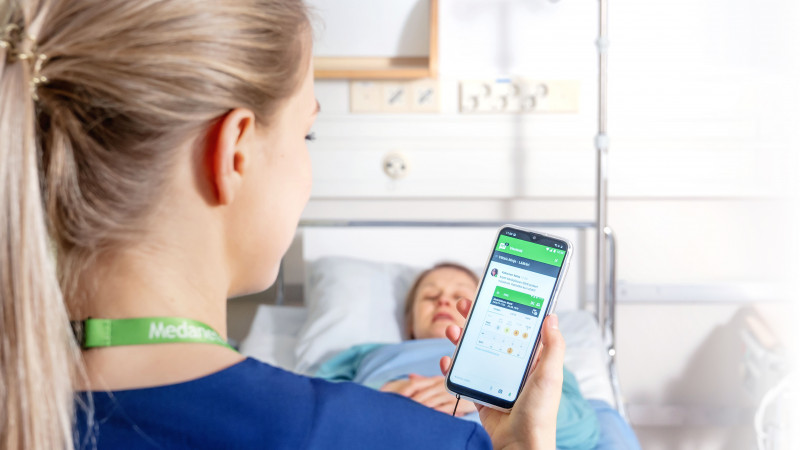
Medication errors are among the most common causes of preventable patient harm worldwide. The World Health Organization (WHO) estimates that medication-related harm accounts for around 50% of all avoidable incidents in healthcare. A recent analysis of the global burden of preventable medication harm found that approximately one in twenty inpatient treatments is affected. More than a quarter of these incidents are severe or even life-threatening (Panagioti et al., 2024; WHO 2022).
The causes range from a lack of transparency in admission medication to unsystematic prescribing processes and undocumented or incorrect administrations. Even in digitalized facilities, medication errors can occur if there are gaps in the process or interfaces prone to media disruption. A missing systemic approach in the medication process thus remains a significant risk to patient safety and quality of care.

A fully digital medication process begins at admission: the initial medication history is documented in a structured way and either transferred from or supplemented via the electronic medication plan (eMP). This structured entry forms the basis for qualified follow-up prescribing.
The physician’s order is placed directly in the electronic chart using standardized drug directories. Automated medication safety checks (e.g. for interactions, duplicate prescriptions, age- or function-related contraindications) are applied. Validation by pharmacists is integrated into the digital process, enabling pharmaceutical review before preparation and dispensing.
Medication is prepared via a directly connected unit-dose system. The data from the electronic chart are transferred seamlessly, allowing patient-specific compilation without media breaks. Logistic feedback to the chart system ensures that status changes (prepared, delivered, ready for administration) are digitally recorded.
At the point of administration, the process is validated via barcode scanning: nursing staff scan both the patient's wristband and the medication label. The system verifies that the medication matches the prescription in real time. Only if everything aligns correctly, the administration is automatically documented in the system.
The process concludes with a structured discharge medication plan. Previous prescriptions can be selectively continued, adjusted, or discontinued. The discharge medication is automatically transferred to the eMP or prepared as a printed plan for the patient's primary care provider or follow-up facility.

MC³ Curve and MC³ Medication support healthcare professionals in structured prescribing, validation, and control of medication-related processes. As part of Mesalvo’s HealthCentre platform, these solutions enable context-sensitive input with built-in medication safety logic and provide a reliable foundation for further pharmaceutical and nursing workflows.
This system is complemented by HealthCentre | Reach, a mobile app for nursing staff that delivers real-time medication information and barcode-based validation at the bedside. Medication administration is not only digitally secured but also documented immediately. This reduces workload, increases transparency, and ensures a traceable, audit-proof medication history.
Hospitals benefit from a closed digital medication loop that reduces safety risks, improves quality of care, and creates structural relief in everyday clinical practice.
Podcast tip: How digital medication processes work in everyday clinical routines is discussed by our Mesalvo expert team in a joint podcast with KMA Online. Coming soon wherever you get your podcasts.



